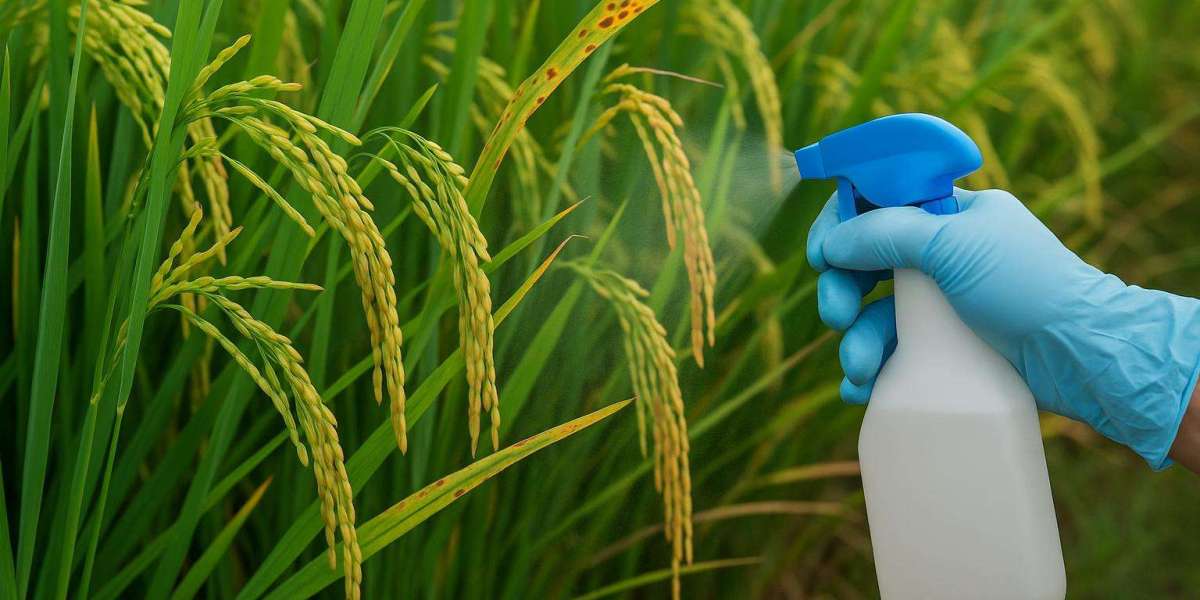What Triggers Leaf Curl and Crinkling in Mid-Season?
Leaf curl and crinkling often result from:
Viral pathogens such as Tomato Leaf Curl Virus or Chilli Leaf Curl Virus
Sap-sucking insect vectors like whiteflies, aphids, and thrips
Micronutrient deficiencies, especially boron and calcium
Environmental triggers, including heat waves, irrigation stress, or poor drainage
These symptoms become more pronounced in mid-season, when vegetative growth is complete and the plant focuses on reproduction. This timing makes it crucial to act quickly, as any delay can result in permanent productivity loss.
Step 1: Suppress Vector Populations Quickly
Whiteflies and aphids are the most common transmitters of leaf curl viruses. Controlling their populations early, mid-season protects healthy plants.
Use yellow sticky traps for whiteflies and blue traps for thrips
Spray bio-insecticides like Beauveria bassiana or neem oil
Apply systemic insecticides if vector pressure exceeds threshold levels
To control whiteflies and increase the plant's systemic resistance, many farmers now opt to buy Wilt Special Plant Protector Online in regions where virus outbreaks are ongoing. In addition to helping crops withstand stress, this chemical suppresses early virus symptoms and provides broad-spectrum protection.
Step 2: Strengthen Plant Defense Mechanisms
Without support for their internal defense systems, plants remain at risk even after vector control. At this point, biostimulants and immunity enhancers are essential.
Foliar sprays with seaweed extracts or salicylic acid analogs help initiate plant defense
Micronutrient blends containing magnesium, boron, and zinc aid in tissue repair
Apply silicon-based products to increase cell wall thickness and reduce further vector feeding
A mid-season foliar plan should be initiated every 7–10 days, especially during high-stress periods.
Step 3: Correct Nutrient Imbalance Promptly
Excess nitrogen or a deficiency in calcium exacerbates curling symptoms. Correct fertilization brings fast visual improvements.
Apply calcium nitrate via drip or foliar to strengthen leaves
Reduce urea if leaf tissue is too soft or water-soaked
Use chelated micronutrient formulations for quick absorption
Balanced nutrition also helps reduce chlorosis and distortion in new leaves.
Step 4: Remove and Isolate Severely Affected Plants
Leaves that are severely wrinkled or curled can harbor viruses. Care must be taken to remove them without upsetting any neighboring plants.
Prune curled leaves only after pest management sprays
Burn or bury infected plant debris away from the growing area
Use gloves and sanitize tools to avoid mechanical transmission
Removing 5–10% of a plant’s foliage can stimulate new growth if the crop is otherwise healthy.
Step 5: Maintain Moisture and Canopy Stability
Crops under drought or heat stress develop physiological curl. Water stress also weakens natural pest resistance.
Use drip irrigation for consistent moisture
Apply mulch around plant bases to reduce root-zone heat
Avoid excessive nitrogen during stress periods
Field trials from Punjab Agricultural University show that mulching reduces leaf temperature by 3–4°C during mid-summer and lowers curling symptoms in capsicum and brinjal.
“A leaf tells you more than just a plant’s age—it reflects stress, nutrition, and defense. Read it like a report card, and you’ll know when to act.”
Crop-Specific Notes for Curl and Crinkling
Tomato and Chilli
Monitor for whitefly infestation and begin integrated pest management early. Use resistant hybrids in future planting cycles.
Cotton
Follow vector threshold-based insecticide rotation to avoid resistance buildup. Leaf curl virus is highly damaging post-monsoon.
Okra
Start with seed treatment and control surrounding weed hosts. Leaf crinkling indicates early virus transmission.
Papaya
Remove infected plants entirely. Replant with certified virus-free seedlings. Curl in papaya rarely reverses once symptomatic.
Incorporate Cultural Practices to Reinforce the Strategy
In addition to chemical and biological treatments, cultural techniques improve results.
Weed control: Eliminate virus host weeds like Parthenium and Croton
Crop spacing: Avoid overcrowding that supports pest spread
Tool hygiene: Disinfect pruning tools between uses to stop virus transfer
Combined, these practices reduce viral spread by up to 65% according to FAO's integrated crop protection guidelines.
Technology Use: Mobile Tools and AI Diagnosis
By submitting leaf photos, farmers may now use AI-powered smartphone apps to detect the indications of leaf curl. These tools provide chemical and location-specific recommendations. Farmers can take action before infestations worsen by using digital pest monitoring technologies to detect whitefly migration.
What Comes Next After Curl Control?
Once leaf curling is controlled, focus on stabilizing plant health and preparing for fruit maturity. The following measures should follow:
Boost potassium through fertigation or foliar spray
Maintain 5–7 day pest scouting intervals
Ensure flowering and fruit retention with boron and molybdenum supplements
Preventing a second wave of vector infestation is key to securing harvest potential. Repeating the cycle of bio-stimulants, pest monitoring, and nutrition helps plants maintain resilience.
FAQs
What is the best time to spray for leaf curl management?
Late afternoon or early morning to maximize absorption and minimize evaporation losses.Can curled leaves return to normal shape after treatment?
No. Already curled leaves won’t recover, but new growth will be healthy if treatment works.How long does it take to see improvement after spraying?
Visible improvement in new leaves appears within 5–10 days depending on plant vigor and weather.Should I stop fertilizing during leaf curl?
No, but switch to balanced nutrition and avoid excessive nitrogen. Supportive nutrients help plants recover faster.Can leaf curl spread from one plant to another?
Yes, if viral. Vectors like whiteflies transfer viruses rapidly between plants. Early isolation and control are essential.Are there any home remedies that help?
Mild infestations can be reduced with neem oil or garlic-chili sprays. These are preventive rather than curative.What crops are most vulnerable to mid-season leaf curl?
Tomatoes, chillies, okra, cotton, cucurbits, and papaya are highly susceptible during flowering and fruit-setting phases.Is prevention better than cure in leaf curl?
Yes. Vector control and balanced nutrition at the early stage prevent 80% of cases from becoming severe.








